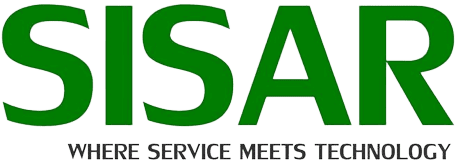Securing an organization’s data and safeguarding our information has evolved into one of the most formidable undertakings in today’s landscape. Many important and personal data are stored, used, and sent online. This includes financial particulars, personal identification specifics, medical histories, intellectual property, etc.

Implement proficient cybersecurity measures as it is imperative to prevent unauthorized entry, theft, or tampering with this delicate information.
What’s essential for safeguarding our data is a tool that generates accurate alerts to pinpoint the ideal destination, which is the SIEM platform, where data remains secure.
Before we explore SIEM and its advantages, let’s begin by grasping its functions and how it operates within the industry.
What is SIEM?
SIEM stands for Security Information and Event Management. It is a security solution that helps organizations recognize and address potential security threats and vulnerabilities before they have a chance to disrupt business operations.
Its comprehensive approach to cybersecurity involves collecting, analyzing, correlating, and managing security-related data from various sources across an organization’s IT infrastructure.
SIEM aids in efficiently identifying and addressing security incidents and threats by offering a centralized and real-time perspective of an organization’s security status.
When a possible problem arises, a SIEM system could record extra details, create an alert, and guide other security measures to halt the progression of any suspicious activity.
Key Functionalities of SIEM
Centralized Log Management
SIEM platforms adeptly store and oversee the vast array of log data from diverse sources across an organization’s digital landscape. This process involves consolidating these logs into a centralized repository, ensuring easy access to historical data for analysis, compliance audits, and forensic investigations.
The centralized log management underscores the proactive and comprehensive nature of SIEM systems, equipping organizations with the means to enhance cybersecurity strategies and effectively respond to threats.
It encompasses event log data from users, endpoints, applications, data sources, cloud workloads, and information derived from security hardware and software, such as firewalls or antivirus programs.
The Significance of Event Correlation in SIEM
Employing event correlation is a pivotal element, as it uncovers and comprehends intricate data patterns, offering valuable insights for effective threat detection and mitigation in business security.
SIEM systems analyze and correlate the collected data to identify patterns, trends, and potential security incidents that might not be apparent when looking at individual events in isolation.
Also, It can detect complex attack patterns and threats by correlating events from different sources.
Diverse Data Collection
SIEM gathers information from diverse sources, including network devices, servers, applications, firewalls, antivirus solutions, intrusion detection/prevention systems, and more.
The data collected consists of logs, events, and various security-related details. This comprehensive collection forms the foundation for analysis and insights that bolster an organization’s security measures.
Rapid Alerting and Proactive Incident Response
The alerting and notification feature is integral to most SIEM dashboards, offering real-time visualizations that empower security analysts to promptly identify spikes or trends in suspicious activity.
By utilizing customizable, pre-established correlation rules, administrators receive immediate alerts, enabling them to take necessary actions to proactively address threats before they escalate into more significant security concerns.
The SIEM system generates personalized alerts and notifications upon detecting potential security incidents or anomalies, with the flexibility to tailor these alerts according to predefined rules and thresholds.
Moreover, SIEM platforms play a pivotal role in incident response by furnishing pertinent information regarding the nature and extent of a security incident.
This information equips security teams to delve into investigations and mitigate incidents with heightened effectiveness.
Compliance Monitoring and threat detection
Compliance monitoring is crucial for numerous organizations as they must adhere to regulatory mandates dictating the oversight and safeguarding of specific data categories.
SIEM systems play a pivotal role in aiding organizations to showcase compliance by meticulously tracing and documenting security-related actions.
Moreover, SIEM platforms excel in threat detection by seamlessly integrating with threat intelligence sources and sophisticated analytical tools.
This fusion empowers these platforms to discern emerging threats and zero-day vulnerabilities swiftly, enhancing an organization’s ability to address potential security risks effectively.
What are the benefits of implementing SIEM?
SIEM provides security teams with a centralized hub to gather, consolidate, and scrutinize extensive enterprise data, simplifying security procedures.
Additionally, it furnishes operational functionalities like compliance reporting, incident management, and prioritized threat activity visualization through dashboards.
- Real-time Incident Response
It instantly generates alerts and notifications whenever security incidents or deviations are detected. This swift responsiveness empowers organizations to promptly take necessary measures to control threats before they become more serious.
- Enhanced Operational Efficiency
SIEM platforms liberate security teams to concentrate on higher-level strategic assignments and proactive threat-hunting endeavors by automating repetitive security tasks and providing a centralized overview of security events.
- Unified Security Management
They offer a unified interface to manage and monitor security events and activities across an organization’s IT infrastructure, reducing complexity and enabling efficient administration.
- Minimized Dwell Time with SIEM
Dwell time denotes when a threat persists undetected within an organization’s infrastructure. SIEM systems aid in diminishing dwell time by swiftly recognizing and addressing security incidents, thereby mitigating potential harm.
Conclusion
SIEM equips organizations with the means to actively oversee, identify, react to, and bounce back from security incidents. This results in lowered risks, enhanced adherence to regulations, and a more robust security stance in today’s intricate and ever-changing threat environment.
In summary, SIEM combines data collection, analysis, correlation, and reporting to provide organizations with a comprehensive view of their security environment. It enhances an organization’s ability to detect and respond to security threats, manage compliance, and maintain a strong security posture.






